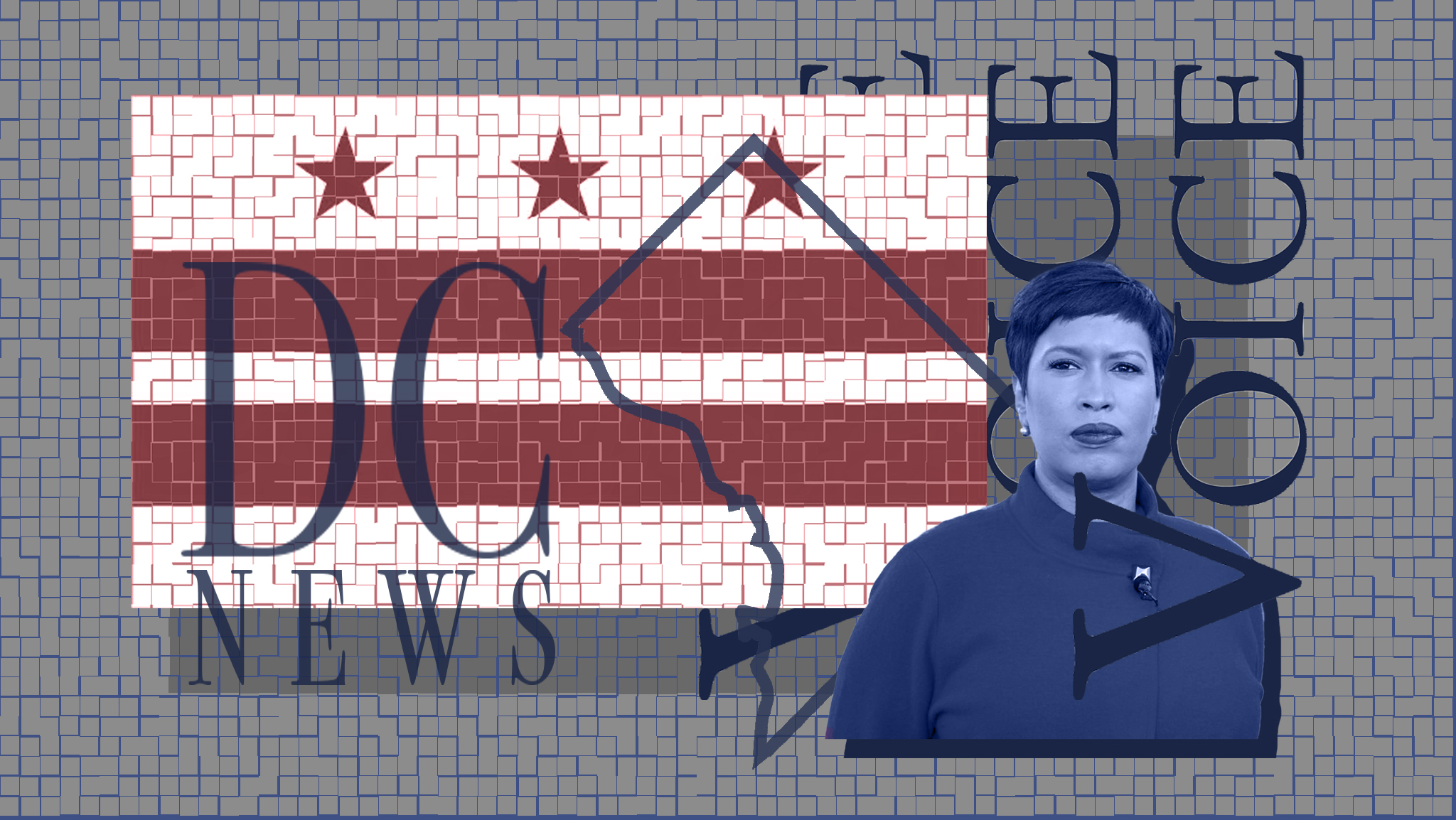Nearly 45 years after the Washington Metropolitan Area Transit Authority (WMATA) welcomed riders aboard its first trains, plans are now being discussed to bring a long-neglected region into the mix: Georgetown.
Residents’ reluctance to develop a Georgetown station stems from concerns about the project’s feasibility, a historic lack of desire to complete it, and a legacy of racist policies and attitudes toward connecting the white neighborhood with the rest of the historically Black city. As traffic and Metro congestion worsens, the idea and potential alternatives are gaining steam.
The D.C. Council has set aside $10 million to purchase the site of the old Exxon gas station near the Exorcist steps in its 2022 budget. The land would be used to create a long-discussed aerial gondola system between Rosslyn and Georgetown or, eventually, a Metro station that would connect Georgetown with the rest of the D.C. area.
The news coincides with the release of a two-year study by WMATA to examine ways to reduce congestion and delays in the tunnel between Foggy Bottom and Rosslyn on the Blue, Orange, and Silver lines. Of the six solutions proposed, four include building a second tunnel under the Potomac River to separate the Blue line from the Orange and Silver lines, which would also create a new station in Georgetown.
The proposed gondola, on the other hand, would follow the Key Bridge across the Potomac River, connecting the Rosslyn Metro station and Georgetown. The ride would take about four minutes and serve about 6,500 passengers a day, according to a 2016 feasibility study. The gondola would serve as a temporary way to improve transportation in Georgetown’s overcrowded streets while plans for a potential Metro station move forward.
Discussions about whether to build a Metro stop in Georgetown date back to the 1960s, when the first Metrorail routes were being drawn. Since then, many theories have been floated as to why Georgetown still does not have a Metro stop of its own, including one rooted in a racist desire to keep people of color and low- income residents away.
In the years leading up to the Great Depression, Georgetown was a predominantly Black neighborhood that thrived economically and culturally. But amid the implementation of New Deal programs in the 1930s, white people increasingly moved to the area, resulting in gentrification and the displacement of Black residents. By 1960, just six years before the National Capital Transportation Agency began planning the District’s public transit system, only 4 percent of Georgetown residents were Black.
“Leave us the hell alone,” Eva Hinton, a white Georgetown resident and then- vice president of the Citizens Association of Georgetown said in a 1977 interview with the Washington Post, in response to efforts to bring a Metro station to the neighborhood. “It would just be the end of Georgetown as we know it,” another resident was quoted as saying.
Logistical obstacles have also contributed to the government’s hesitancy to build a Georgetown Metro station. According to Zachary Schrag, author of The Great Society Subway: A History of the Washington Metro, Metro planners in the 1960s did not think the cost of a Georgetown station could be rationalized.
“A Georgetown station was considered in the mid-1960s, and the planners I talked to who had been working then explained to me that they did not think the cost of the station would be justified,” Schrag said in an interview with the Voice. “It’s a very spread- out area. You don’t have apartment towers, you don’t have office towers, you don’t have parking, and those were the kinds of things that planners were trying to serve.”
According to Schrag, extra work would also need to be done to protect Georgetown’s historic buildings from collapsing if tunnels are built underneath.
“Where there was a very compelling reason to put Metro by a historic building, such as Gallery Place, WMATA did a lot of work to make sure that building wouldn’t collapse,” he said. “But they didn’t want to do that more than they had to, and Georgetown did not present such a compelling reason.”
Although Schrag believes practical considerations were the main reason a Georgetown Metro station was never built, he also acknowledges that residents initially resisted the idea.
“There certainly was opposition in Georgetown in the 1960s and since,” he said. “That’s unsurprising, since there was opposition in every residential neighborhood that has been served by Metro, either because people didn’t want Metro itself, or they did not want the parking, automobile traffic, or bus traffic Metro would bring.”
Today, the Georgetown area’s growth and changing transportation needs have made residents more receptive to the idea, according to Joe Sternlieb, president and CEO of the Georgetown Business Improvement District (BID), a non-profit dedicated to preserving and maximizing the accessibility, attractiveness, and appeal of Georgetown’s commercial businesses.
“In the last seven or eight years, the Citizens Association of Georgetown, the Advisory Commission, the BID, the university, everybody has weighed in in favor of bringing the Metro to Georgetown,” Sternlieb said. “It’s a clear community consensus that the neighborhood wants Metro.”
For Sternlieb, the focus has now shifted from assessing community sentiment to making the project a reality. Although influential neighborhood leaders are now on board, a Georgetown station would still take anywhere between 25 to 45 years to plan and build.
Despite this long timeline, Sternlieb is already envisioning how a Metro station would fit into the neighborhood. One concern is that Georgetown is not sufficiently condensed into one area like many other neighborhoods in D.C., which would make it difficult to have just one Metro station adequately serve the entire community. In the long term, Sternlieb anticipates solving this problem by having two Metro stations in the Georgetown area.
“Two would be better: one on the east side and one on the west side,” Sternlieb said. “The Exxon station is one possibility to place a site, or somewhere in that area of the west side of Georgetown.”
The biggest obstacle to these ambitions, Sternlieb predicts, will be the price tag.
“It’s enormously expensive to do any type of these transit projects,” Sternlieb said. “If we had all the money in the world, we would build it tomorrow.”
According to Sternlieb, estimates for a new Blue line between Rosslyn and Union Station, which would include a stop in Georgetown, range from $13 to $20 billion. The WMATA study says the preferred option, which would see the redesigned Blue line go all the way to National Harbor, would cost between $20 and $25 billion. Because a Georgetown Metro station would be about 25 years away at the earliest, local leaders are turning to the gondola as a more immediate way to connect the neighborhood to the Metro system while the lengthier process of creating a station plays out.
“Our feeling is that the gondola would be a really terrific interim solution,” Sternlieb said. “Instead of waiting 25 to 45 years for a Metro station, you could at least have the gondola doing point-to-point service between the Metro system and the west side of Georgetown within the next five years.”
Sternlieb estimates that the gondola would take four years to be approved and then another 18 months to build. According to the feasibility study, the gondola would also cost much less, between $80 and $90 million.
WMATA’s board of directors is expected to decide next year which proposal outlined in the study should be implemented.
In Schrag’s view, this complex process is indicative not only of the challenge that transit planners will face but also of the importance of their work.
“It’s a tough job to be a transit planner, to try and predict what cities are going to be like in 30 and 50 years,” he said. “It’s very hard. But without investment in infrastructure, we cannot provide for future generations.”





